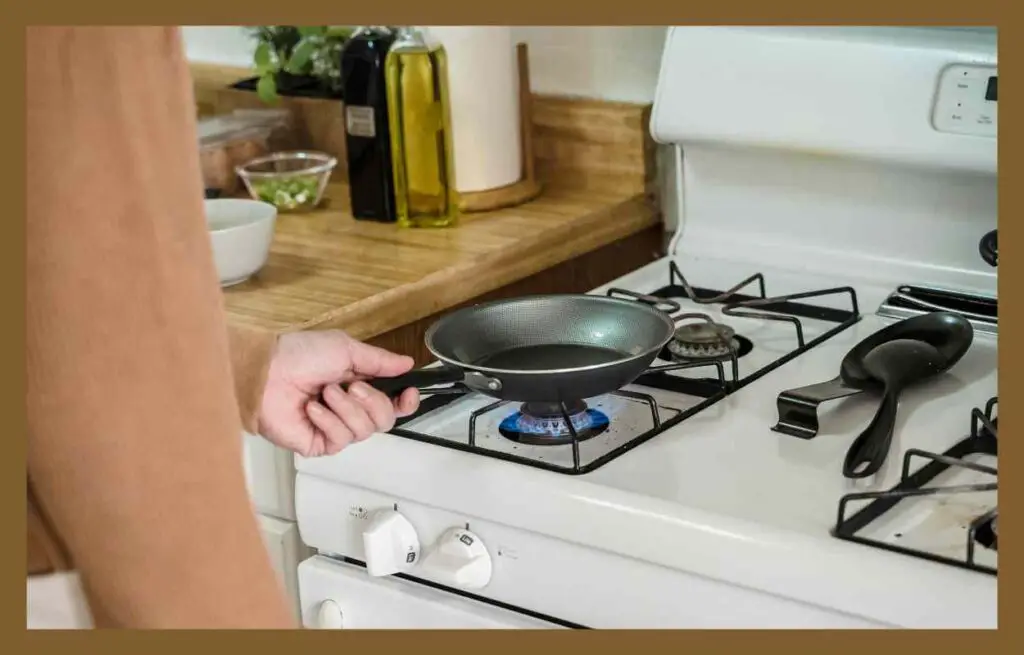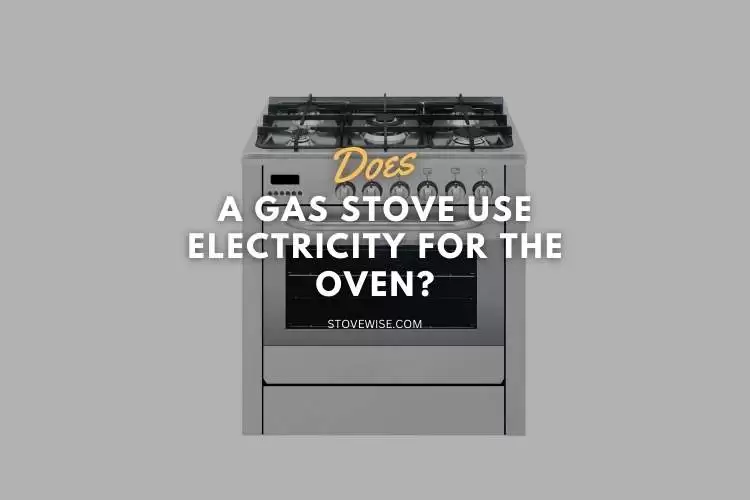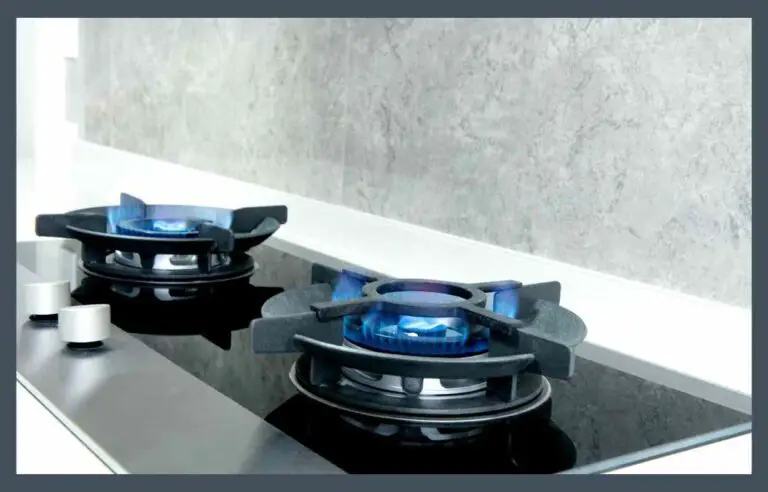How to Tell If Your Stove Is Electric or Gas?
Whether you’re moving into a new home or just want to double-check what kind of stove you have, it’s important to know whether your stove is electric or gas.
Not only will this help you determine what kind of maintenance and repairs your stove may need, but it will also help you choose the right cookware and cooking methods.
But, how to tell if your stove is electric or gas? Check the cooktop for visible burners to determine if your stove is gas or electric. If the units have removable grates, your range is likely gas. If there are no grates and the burners are horizontal, it is likely that your stove is electric. Additionally, you can examine the oven for a heating element or gas igniter.

Contents
How to Tell If Your Stove Is Electric or Gas?
1. Check the Burners
The easiest way to tell if your stove is electric or gas is to check the burners. Gas stoves have visible burners with grates that are removable, while electric stoves have flat, smooth burners.
2. Check the Oven
If your stove has an oven, you can also check it to determine whether it’s electric or gas. Gas ovens have a gas igniter that lights the burner, while electric ovens have a heating element that heats the oven.
3. Check the Power Source
If you’re still unsure, you can check the power source. Gas stoves are connected to a gas line, while electric stoves are connected to an electrical outlet.
Difference Between Electric and Gas Stoves
Electric and gas stoves are two of the most common types of stoves used in homes today. While both types of stoves perform the same basic function of cooking food, they have several differences that can affect their performance, energy efficiency, and maintenance requirements.
Cooking Time
One of the most significant differences between electric and gas stoves is their cooking time. Gas stoves heat up faster than electric stoves, so they’re better for cooking food quickly.
This is because gas stoves use an open flame to heat the cookware, while electric stoves use a heating element that takes longer to heat up.
However, electric stoves are better for cooking food evenly and at a consistent temperature. This is because the heating element provides a more uniform heat source than an open flame.
Energy Efficiency
Another major difference between electric and gas stoves is their energy efficiency. Electric stoves are more energy-efficient than gas stoves because they don’t lose heat as quickly.
This means that less energy is required to maintain a consistent temperature, which can result in lower energy bills. However, gas stoves are more cost-effective in areas where natural gas is inexpensive.
Maintenance
Gas stoves require more maintenance than electric stoves because they have more parts that can break or malfunction.
For example, gas stoves have gas lines, igniters, and burners that need to be cleaned and maintained regularly.
Electric stoves, on the other hand, are generally easier to clean and maintain because they have fewer parts that can malfunction.
Cost
The cost of a stove can vary depending on its type and features. In general, gas stoves are less expensive than electric stoves. This is because gas stoves are simpler in design and require fewer parts.
However, the cost of operating a gas stove can be higher than the cost of operating an electric stove, especially in areas where natural gas is expensive.
To summarize the differences between electric and gas stoves, the following table provides a side-by-side comparison of their features:
| Feature | Gas Stove | Electric Stove |
|---|---|---|
| Heat up time | Fast | Slow |
| Cooking time | Quick | Even |
| Energy efficiency | Less efficient | More efficient |
| Maintenance | More maintenance required | Easier to maintain |
| Cost | Cost-effective in areas with inexpensive natural gas | More expensive to operate |
Wrap-up
Knowing whether your stove is electric or gas is important for maintenance, repairs, and cooking. By checking the burners, oven, and power source, you can determine what kind of stove you have.
Gas stoves heat up faster and are better for cooking quickly, while electric stoves are more energy-efficient and easier to clean.
Dual-fuel stoves offer the benefits of both gas and electricity, but they can be expensive. With proper care and maintenance, your stove can last for many years.
FAQs
Can a Stove Be Both Gas and Electric?
While it’s possible to have a stove that uses both gas and electric, it’s not common. These stoves are called dual-fuel stoves and typically have a gas cooktop and an electric oven. Dual-fuel stoves are more expensive than traditional gas or electric stoves, but they offer the benefits of both.
How Do I Know If My Stove Is Electric or Ceramic?
To tell if your stove is electric or ceramic, check the burners. Ceramic stoves have flat, smooth burners that are often black or gray. Electric stoves may have flat, smooth burners or visible heating coils. You can also check the oven for a heating element.
How Do You Light a Gas Stove?
To light a gas stove, turn the burner knob to the “light” or “ignite” position and hold a lighter or match near the burner. The gas should ignite and the burner should light. If the burner doesn’t light, turn off the gas and try again in a few minutes.
How Long Do Gas Stoves Last?
Gas stoves can last for 15-20 years with proper maintenance and care. However, individual parts may need to be replaced over time, such as the burners or the gas igniter. Electric stoves can last even longer, up to 25 years or more.
Can You Convert a Gas Stove to Electric?
While it’s technically possible to convert a gas stove to electric, it’s not recommended. The process can be expensive and time-consuming, and it may not be worth the effort. It’s usually easier and more cost-effective to simply replace the stove with one that uses the desired fuel type.
How Do I Clean My Gas Stove?
To clean a gas stove, remove the grates and burners and soak them in warm, soapy water. Wipe down the stovetop with a damp cloth or sponge, being careful not to get water in the burners. Use a toothbrush to clean any hard-to-reach areas. Dry the grates and burners thoroughly before replacing them.






